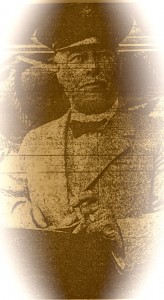I wrote this in 2001.
Prominent oil executive’s son collides with irate chauffeur
 Captain John Barneson, borin in Wick, Scotland, in 1862, descended from men who had followed the sea. At age 21, Barneson was put in command of one of the family’s ships sailing on the American-Asian run.
Captain John Barneson, borin in Wick, Scotland, in 1862, descended from men who had followed the sea. At age 21, Barneson was put in command of one of the family’s ships sailing on the American-Asian run.
Thirty years later Barneson moved from the bridge of the ship to establishing his own shipping business in San Francisco. During the Spanish-American War he returned to the sea as captain of the transport, Arizona, carrying troops across the Pacific.
At about this time, it was said, Captain Barneson became fascinated with petroleum, believing that the day was near when all ships would be propelled by oil, rather than the coal used in early steam engines.
In a successful experiment, he persuaded Captain William Matson of the famous shippng family to use the new fuel on the Enterprise, a vessel plying between San Francisco and Honolulu.
It took about 20 years for Captain Barneson’s prediction to come to pass. Oil-powered ships became well known and accepted throughout the world.
The dynamic Barneson then turned to a new challenge, the problems involved with getting oil to the consumer. He was credited with building an oil pipeline between Coalinga and Monterey, the first of its kind in California. Against the advice of many experts, he followed with construction of another line from the valley fields southward over the Tejon Pass.
He then began operations in the Los Angeles area, forming the Grand Pipe Line Company and becoming associated with the Esperanza Consolidted Oil Company.
By 1912, when son Harold collided with the vehicle driven by the chauffeur, Captain Barneson had become the dominating force in the founding of the General Petroleum Company.
The General Petroleum Company was doing just fine, but it fell under the shadow of giants like Union and Standard Oil. Standard was on the move, controlling much of the marketing, distribution and oil production in the West.
While California had been viewed as a major oil province in the 1900s, the Rocky Mountain range presented a geographical barrier, cutting the state off from the rest of the nation where the bulk of oil customers resided.
To some experts it appeared that California’s future oil production would be marketed to Asians rather than those domestic markets east of the Rockies.
Captain Barneson remained an executive with General Petroleum until 1928 when he resigned due to ill health. Interestingly, he was also a vice president of the Standard Oil Company of New York.
(next, Part 4)
